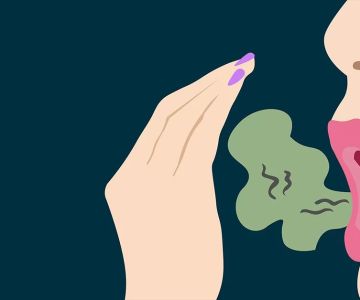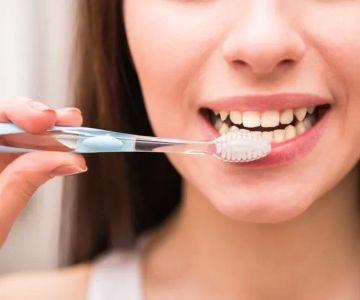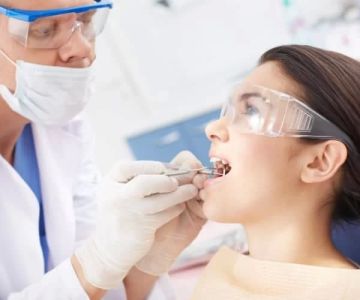What Is Good Oral Hygiene and How to Achieve It
Good oral hygiene is an essential part of maintaining overall health. Many people think that brushing their teeth twice a day is enough, but there is so much more to oral hygiene than meets the eye. Oral health not only keeps your smile bright, but it also helps prevent serious dental issues like cavities and gum disease. In this article, we will explore what good oral hygiene is, why it’s important, and how you can take steps to ensure that your teeth and gums stay healthy for a lifetime.
1. The Basics of Oral Hygiene
Good oral hygiene refers to the practices and habits that keep your teeth, gums, and mouth healthy. The primary goal of good oral hygiene is to prevent dental problems such as cavities, gum disease, and bad breath. To achieve this, it’s essential to establish a consistent and effective oral care routine that includes the following steps:
- Brushing your teeth: Brush your teeth at least twice a day using fluoride toothpaste. Brushing helps remove plaque, food particles, and bacteria that can contribute to cavities and gum disease.
- Flossing: Floss at least once a day to clean between your teeth and remove plaque and food particles that your toothbrush might miss.
- Regular dental checkups: Visit your dentist for regular checkups and cleanings to catch any dental problems early and maintain optimal oral health.
2. The Importance of Brushing
Brushing your teeth is the cornerstone of good oral hygiene. It is essential to brush your teeth properly to remove plaque and prevent tooth decay. Plaque is a sticky film of bacteria that forms on your teeth and gums after eating. Over time, if not removed, plaque can harden into tartar, which can only be cleaned by a dentist. The longer plaque sits on your teeth, the greater the risk of developing cavities, gum disease, and even tooth loss.
When brushing, use a soft-bristled toothbrush and fluoride toothpaste. Brush all surfaces of your teeth for at least two minutes, making sure to reach the back teeth, along the gum line, and in between the teeth. Don’t forget to brush your tongue as well, as bacteria can accumulate there, contributing to bad breath and poor oral health.
3. The Role of Flossing in Oral Hygiene
Flossing is an essential step in a good oral hygiene routine. It helps clean between your teeth and removes plaque and food particles that brushing alone cannot reach. Flossing also helps prevent gum disease, which is caused by the buildup of plaque along the gum line. Without flossing, food particles and plaque can stay trapped between your teeth, leading to inflammation and infection of the gums.
To floss correctly, use about 18 inches of dental floss and wrap it around your fingers. Gently slide the floss between your teeth and curve it around each tooth to remove plaque. Avoid snapping the floss, as this can harm your gums. Flossing should be done at least once a day, preferably before brushing to remove debris and bacteria before they settle on your teeth.
4. Regular Dental Checkups and Cleanings
Even with excellent at-home oral hygiene practices, regular visits to the dentist are essential for maintaining healthy teeth and gums. Dentists can detect early signs of cavities, gum disease, and other oral health problems that you might not be able to see or feel. Professional cleanings are also important for removing tartar buildup that cannot be removed with brushing and flossing alone.
During your checkup, your dentist will examine your mouth, check for signs of dental problems, and may take X-rays to assess the health of your teeth and jawbone. Regular visits help ensure that any issues are addressed early before they become more serious, reducing the need for costly treatments or procedures down the road.
5. Healthy Diet and Oral Hygiene
Your diet plays a significant role in maintaining good oral hygiene. What you eat can impact the health of your teeth and gums. A diet high in sugary foods and drinks can contribute to the buildup of plaque and the development of cavities. Sugars feed harmful bacteria in your mouth, leading to acid production that erodes tooth enamel.
On the other hand, a healthy diet that includes plenty of fruits, vegetables, whole grains, and dairy products can help keep your teeth and gums healthy. Foods like apples, carrots, and celery help clean teeth naturally and stimulate saliva production, which helps neutralize acids in the mouth. Dairy products like milk and cheese provide calcium, which strengthens tooth enamel and supports overall oral health.
6. The Impact of Smoking on Oral Health
Smoking is one of the leading causes of poor oral health. It increases the risk of gum disease, tooth loss, and oral cancer. Smoking also contributes to bad breath, stained teeth, and slower healing after dental procedures. The chemicals in cigarettes and tobacco can damage the gums, making them more vulnerable to infection and disease.
If you smoke, quitting is one of the best things you can do for your oral health. Not only will it reduce your risk of developing serious dental problems, but it will also improve your overall health. If you’re struggling to quit, talk to your dentist about resources and support options to help you on your journey.
7. Maintaining Good Oral Hygiene for Children
Teaching children the importance of good oral hygiene is a crucial part of setting them up for a lifetime of healthy teeth and gums. Start brushing your child’s teeth as soon as their first tooth emerges, using a soft-bristled toothbrush and a small amount of fluoride toothpaste. Make brushing a fun and positive experience by engaging with your child and setting a good example.
As your child grows, encourage them to brush their teeth twice a day, floss daily, and visit the dentist regularly. Help them develop healthy eating habits by providing nutritious meals and limiting sugary snacks and drinks. By instilling these habits early on, you can ensure your child’s oral health remains strong as they grow.
Conclusion: Maintaining Lifelong Oral Health
Good oral hygiene is essential not only for maintaining a beautiful smile but also for preventing serious health issues. By brushing, flossing, and visiting the dentist regularly, you can reduce your risk of cavities, gum disease, and other oral health problems. Additionally, a balanced diet and avoiding habits like smoking will support your efforts in maintaining strong, healthy teeth and gums for a lifetime. Start practicing good oral hygiene today, and enjoy the benefits of a healthier mouth and body.
For more tips on oral health and maintaining a beautiful smile, visit Dentistry Toothtruth for expert advice and resources on your dental care needs.







 Westgate Dental Arts
Westgate Dental Arts Coventry Family Dental
Coventry Family Dental Familia Dental
Familia Dental Dr. Daniel S. Fife, DDS
Dr. Daniel S. Fife, DDS Dentistry At Suburban Square: Michael I. Wollock, DMD
Dentistry At Suburban Square: Michael I. Wollock, DMD Comfort Care Dental
Comfort Care Dental The Importance of Oral Health Education During Pregnancy for a Healthy Pregnancy
The Importance of Oral Health Education During Pregnancy for a Healthy Pregnancy Why Skipping Dental Checkups Can Lead to Bigger Oral Health Problems
Why Skipping Dental Checkups Can Lead to Bigger Oral Health Problems Advantages of Porcelain Dental Restorations
Advantages of Porcelain Dental Restorations Best Tips for Brushing Your Teeth Properly for Healthy Gums: Essential Techniques for Oral Health
Best Tips for Brushing Your Teeth Properly for Healthy Gums: Essential Techniques for Oral Health How Can Diabetes Cause Tooth and Gum Problems? Preventing and Managing Oral Health Issues
How Can Diabetes Cause Tooth and Gum Problems? Preventing and Managing Oral Health Issues Healthy Habits for Promoting Good Oral Health and Hygiene: Tips for a Healthy Smile
Healthy Habits for Promoting Good Oral Health and Hygiene: Tips for a Healthy Smile